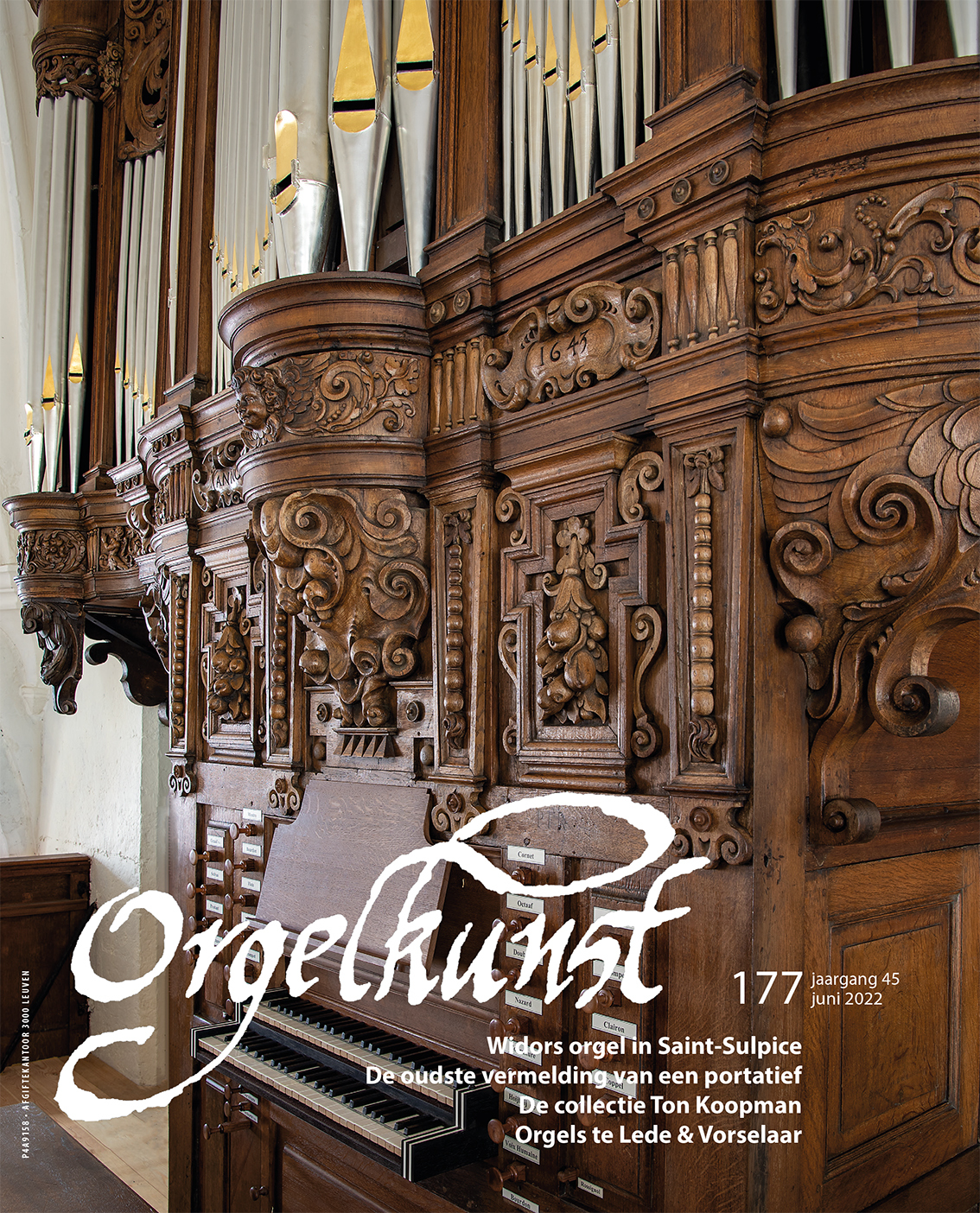
Separate issue
2022.02
Luk Bastiaens
Orgelkunst.be
Rollin Smith
Widors orgel in Saint-Sulpice
Wilfried Praet
Koning David op weg met de Ark
— de oudste expliciete vermelding van een portatief
Luk Bastiaens
Zorg om oud, nieuw en kostbaar orgelpapier (4)
— de collectie Ton Koopman
Jef Braekmans & Bart Wuilmus
Het orgel in de Sint-Martinuskerk te Lede
Redactie
Deelrestauratie en groot onderhoud van het Merklin & Schütz-orgel in de Sint-Pieterskerk te Vorselaar
Nieuwe uitgaven . Berichten . Concertagenda . Overzicht inhoud internationale tijdschriften
Summary
Widors organ at Saint-Sulpice
Charles-Marie Widor (1844-1937) and Marcel Dupré (1886-1971 were both organists and composers.They followed each other as organists of Saint-Sulpice (Paris), covering a period of almost a century, so that the organ remains to this day in almost original condition.During the completion of the church interior, Jean-François-Thérèse Chalgrin (1739-1811) was invited to submit a design for an organ case consistent with the style of the gallery. The instrument itself was entrusted to François-Henri Clicquot (1732-1790), the most renowned French organ-builder of the time. With 64 stops, five manuals and pedal, the organ was completed on April 30, 1781. It providentially escaped destruction during the Revolution, but by 1832 it was over 50 years' old, and showing signs of age.
In 1855 the recently ordained Pierre-Henri Lamazou (1828-1883) became curate of the church. He was as much interested in organs as in his ecclesiastical duties, and it was he who was responsible for entrusting the maintenance of the organ to Aristide Cavaillé-Coll. Work proceeded slowly and was only half finished by June 1858, the date set for its completion. Without authorization from the parish, Cavaillé-Coll decided to enlarge the organ. A contract had been signed for an organ with 72 stops, four manuals and pedal for the price of 47.000 francs. Cavaillé-Coll decided to build an organ with 100 stops, five manuals and pedal for a total cost of more than 146.000 francs. From a four-manual organ with 97 ranks it had increased to a five-manual instrument with 135 ranks. After thirty years of close association with the organ, Widor took the opportunity of an overhaul in 1903 for a few alterations. Since the use of the R.cit was becoming increasingly significant in organ music, its position in the console was interchanged with the Bombarde keyboard, which was transferred to fifth position and renamed Solo. An electric ventilator was installed in 1922. On January 1 1934, just 64 years after he had been “provisionally” appointed as organist, Widor resigned, and was succeeded by his pupil Marcel Dupré. In honour of Widor, Principals 16 and 8' were added to the Pedal, bringing the total number of ranks to 137.
